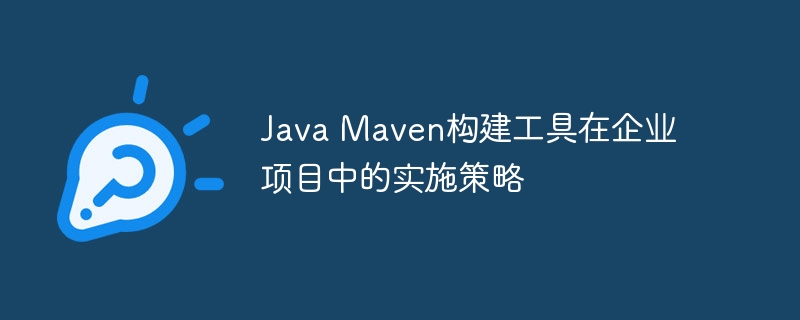
Best practices for implementing Maven build tools in enterprise projects include: following Maven's project structure, leveraging Maven's dependency management, using plug-ins to extend Maven's functionality, integrating Maven into other tools, and combining Maven and continuous integration tools . The practical case shows an enterprise project named "MyEnterpriseApp". Its pom.xml configuration and build commands are helpful for understanding the application of Maven in enterprise projects.

Implementation Strategy of Java Maven Build Tool in Enterprise Projects
Introduction
Maven is a popular Java build tool that simplifies the software development and building process using declarative configuration and dependency management. This article will explore the best practices for implementing Maven in enterprise projects and provide a practical case to illustrate its application.
Strategy
1. Project Structure
2. Dependency management
3. Plug-in usage
Use Maven plug-in to extend Maven functions, for example:
##4. Integration tools
5. Continuous integration
Practical Case
Consider a sample enterprise project called "MyEnterpriseApp", which contains the following modules:pom.xml configuration
<project xmlns="http://maven.apache.org/POM/4.0.0" xmlns:xsi="http://www.w3.org/2001/XMLSchema-instance"
xsi:schemaLocation="http://maven.apache.org/POM/4.0.0 https://maven.apache.org/xsd/maven-4.0.0.xsd">
<modelVersion>4.0.0</modelVersion>
<groupId>com.example.myenterpriseapp</groupId>
<artifactId>my-enterprise-app</artifactId>
<version>1.0.0-SNAPSHOT</version>
<modules>
<module>core</module>
<module>web</module>
<module>api</module>
</modules>mvn clean install
Conclusion
By following the overview Based on the strategies and practical cases, enterprise projects can effectively implement the Maven build tool to simplify the build process, improve efficiency and ensure the stability of the code base.The above is the detailed content of Implementation strategies of Java Maven build tool in enterprise projects. For more information, please follow other related articles on the PHP Chinese website!
